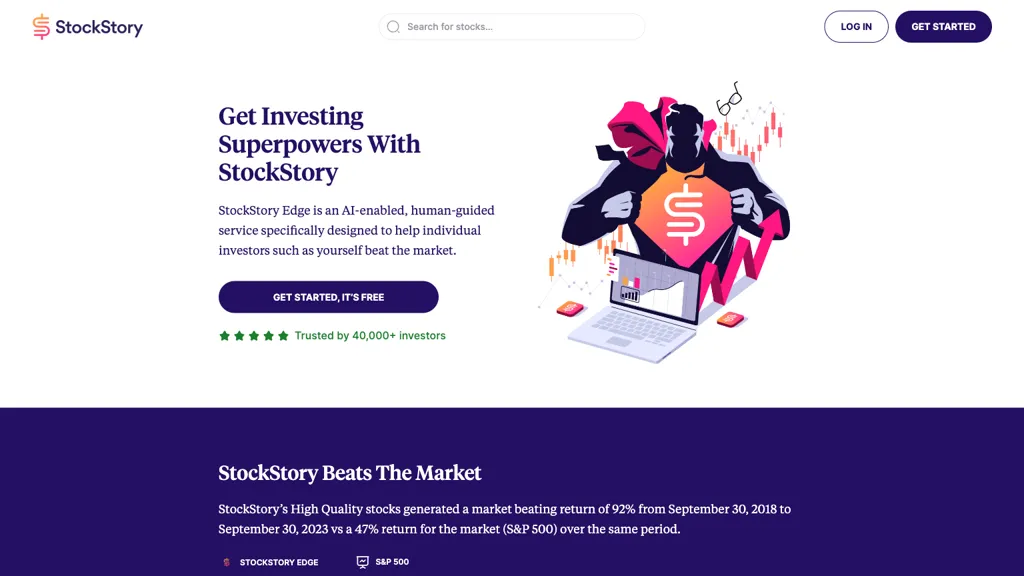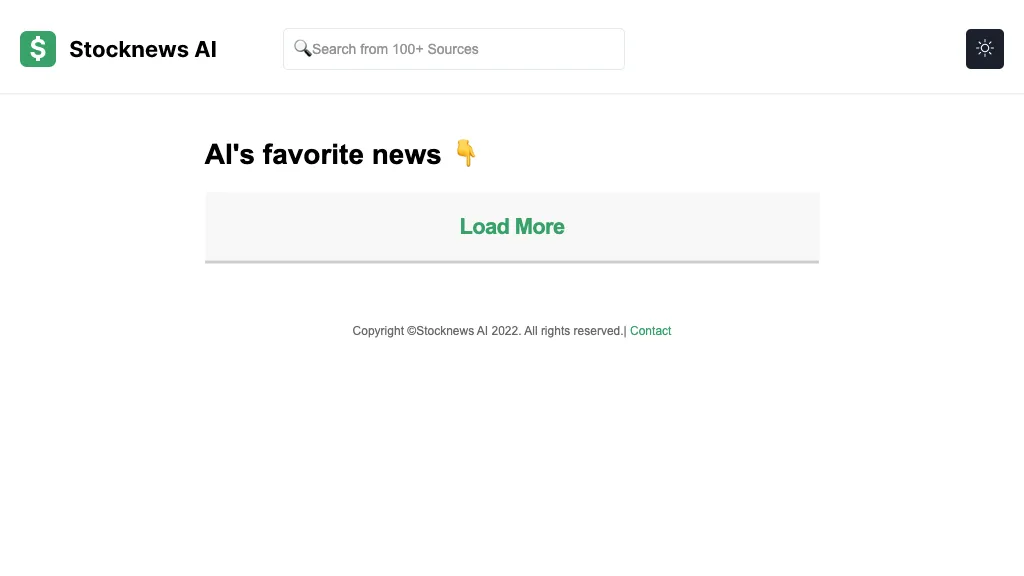20 Excellent Facts To Picking AI Stock Picker Platform Sites
20 Excellent Facts To Picking AI Stock Picker Platform Sites
Blog Article
Top 10 Suggestions For Evaluating Ai And Machine Learning Models Used By Ai Platforms For Analyzing And Predicting Trading Stocks.
To get precise information, accurate and reliable it is essential to check the AI models and machine learning (ML). Poorly designed or overhyped models could lead to inaccurate predictions and even financial losses. Here are 10 top ways to evaluate the AI/ML platforms of these platforms.
1. Understanding the purpose of the model and method of operation
A clear objective: determine whether the model was designed to be used for trading in the short term, long-term investing, sentiment analysis or risk management.
Algorithm transparency: Check if the platform provides the type of algorithms employed (e.g. regression or neural networks, decision trees or reinforcement learning).
Customization - Find out whether you are able to modify the model to suit your trading strategy and risk tolerance.
2. Examine the performance of models using measures
Accuracy: Check the model's accuracy of prediction. However, don't solely rely on this metric. It may be inaccurate on financial markets.
Precision and recall - Evaluate the model's ability to identify real positives and reduce false positives.
Risk-adjusted returns: See whether a model's predictions produce profitable trades taking risk into account (e.g. Sharpe or Sortino ratio).
3. Test the model by Backtesting
Historical performance: Use historical data to backtest the model and determine how it would have performed under past market conditions.
Tests with data that were not being used to train: To avoid overfitting, test the model with data that was not previously used.
Analyzing scenarios: Examine the model's performance under different market conditions.
4. Be sure to check for any overfitting
Overfitting: Be aware of models that work well with training data, but not so well when using data that is not seen.
Regularization: Determine if the platform uses regularization techniques such as L1/L2 and dropouts in order to prevent overfitting.
Cross-validation - Make sure that the platform uses cross-validation to test the generalizability of the model.
5. Examine Feature Engineering
Look for features that are relevant.
Select features: Make sure the system only includes statistically significant features and does not include redundant or irrelevant data.
Dynamic feature updates: See whether the model adapts with time to incorporate new features or changing market conditions.
6. Evaluate Model Explainability
Interpretability - Make sure that the model offers an explanation (e.g. value of SHAP, feature importance) to support its claims.
Black-box platforms: Be careful of platforms that utilize too complicated models (e.g. neural networks deep) without explanation tools.
User-friendly insights: Check if the platform gives actionable insight in a format that traders are able to comprehend and utilize.
7. Examining Model Adaptability
Changes in the market - Make sure that the model can be modified to reflect changing market conditions.
Verify that your platform is updating its model on a regular basis by adding new data. This will increase the performance.
Feedback loops: Ensure that the platform is incorporating feedback from users or real-world results to improve the model.
8. Be sure to look for Bias in the elections
Data bias: Ensure that the training data are representative of the market and free of bias (e.g. overrepresentation in certain time periods or sectors).
Model bias: Make sure that the platform is actively monitoring biases in models and reduces them.
Fairness. Make sure your model doesn't unfairly favor specific industries, stocks or trading strategies.
9. Calculate Computational Efficient
Speed: See whether the model is able to make predictions in real-time or with a minimum of latency. This is especially important for traders with high frequency.
Scalability: Check if the platform can handle large datasets and multiple users with no performance loss.
Resource usage: Check if the model is optimized to use computational resources effectively (e.g. use of GPU/TPU).
Review Transparency and Accountability
Model documentation: Ensure the platform has a detailed description of the model's architecture as well as its training process, as well as limitations.
Third-party audits: Verify whether the model has been independently validated or audited by third parties.
Error handling: Examine for yourself if your software incorporates mechanisms for detecting or fixing model errors.
Bonus Tips
Case studies and user reviews User reviews and case studies: Study feedback from users as well as case studies in order to assess the performance of the model in real-life situations.
Trial period: Use the demo or trial for free to test the models and their predictions.
Customer support: Make sure the platform offers a solid assistance for model or technical problems.
Following these tips can help you assess the AI models and ML models on platforms that predict stocks. You'll be able to assess if they are transparent and reliable. They should also align with your trading goals. Take a look at the best top article for ai trade for blog advice including investing ai, ai for investment, ai for investing, using ai to trade stocks, market ai, ai investing platform, ai investing, ai stock picker, stock ai, ai trading and more.
Top 10 Tips For Assessing The Regulatory Compliant Of Ai Stock Analysis And Prediction Platform
When it comes to evaluating AI trading platforms, regulatory compliance is a crucial aspect. Compliance helps to ensure that the platform operates within legal frameworks and protecting the privacy of users. Here are 10 top ways to evaluate the compliance with regulations of these platforms:
1. Verify the Licensing & Registration
The regulatory bodies: Make sure that the platform is registered and licensed by the appropriate financial regulatory body (e.g. SEC, FCA, ASIC, etc.) in your country.
Verify broker partnerships. If the platform integrates brokers, ensure that they are licensed and regulated.
Public records: Visit the site of the regulator to find out if the platform has been registered or if it has ever violated the law.
2. Take Data Privacy Measures Compliance
GDPR: If operating in or serving users in the EU make sure the platform meets the requirements of the General Data Protection Regulation (GDPR).
CCPA: For users in California Verify that they are in compliance to the California Consumer Privacy Act (CCPA).
Policies for handling data. Examine the platform's privacy policies and ensure that it clearly outlines the manner in which user data is collected, shared and stored.
3. Evaluation of Anti-Money Laundering/AML Measures
AML policies: Ensure that the platform has robust AML policies to detect and prevent cash laundering.
KYC procedures. Check whether your platform is following Know Your Customer processes for verifying user identity.
Monitor transactions: Check if the platform can monitor transactions and reporting any suspicious activity to the appropriate authorities.
4. Verify compliance with Trading Regulations
Market manipulation: Ensure that the platform is equipped with strategies to stop market manipulation, such as wash trading or the spoofing.
Order types: Check whether the platform is in compliance with regulations regarding order types.
The best execution: Ensure that the platform follows the best execution practices. This will ensure that trades are completed at the best possible price.
5. Examine Cybersecurity Compliance
Data encryption: Ensure the platform has encryption in place to protect the data of users in transit and at rest.
Response to incidents. Verify that there is an incident response strategy on the platform to deal with cyberattacks as well as data breaches.
Certifications: Check if the platform is certified for cybersecurity (e.g. ISO 27001, SOC 2)
6. Transparency Disclosure, Transparency and Evaluation
Fee disclosure - Make sure the fees are fully revealed, including additional or hidden charges.
Risk disclosure: Ensure that the platform is transparent about all risks, especially in the case of high-risk strategies, or trading using leverage.
Performance reporting: Ensure the platform provides transparent and accurate performance data to its AI model.
7. Check for the conformity to International Regulations
Cross-border trading: If you trade internationally, ensure the platform complies with rules in all the jurisdictions relevant to you.
Tax reporting: Find out whether the platform offers tools or reports that help users comply with tax regulations (e.g., FIFO rules in the U.S.).
Check for compliance with sanctions. Verify that the platform adheres and does NOT allow trading or dealings with countries or entities that are banned.
8. Assessing Record-Keeping and Audit trails
Transaction records: Ensure the platform has accurate records of all transactions for regulatory and audit purposes.
Logs of user activity: Check if the platform logs users' activities, including logins, trades, and changes to the account settings.
Audit readiness: Ensure the platform has all of the necessary documentation and logs to pass a regulatory review.
9. Make sure you are in compliance with AI-specific Regulations
Algorithmic trading regulations: If you're using a platform that allows algorithmic trading, make sure it is compatible with relevant regulatory frameworks like MiFID II or Reg SCI, in Europe as well as the U.S.
Fairness and impartiality: Verify the accuracy of the platform's AI models are monitored and controlled to ensure that they are not biased.
Explainability: Make sure the platform has clear explanations of AI-driven predictions and decision making, as required by some rules.
10. Review user feedback and the history of regulatory compliance
User reviews: Use feedback from users to assess the platform's regulatory compliance.
Historical Record: Search for any past violations of regulations such as fines, penalties or fines.
Third-party auditors: Make sure that the platform is regularly audited by third-party auditors to ensure it's adhering to rules and regulations.
Bonus Tips
Legal consultation: Contact an expert in the field to verify whether your website is compliant with laws.
Trial period: Try an unpaid trial or demo to evaluate the platform's conformity features and documentation.
Customer support: Check whether the platform is able to provide assistance to customers who have questions or concerns related to compliance.
If you follow these guidelines that you will be able to assess the compliance with regulations of AI platforms for stock prediction and analysis and ensure that you select an option that is within the legal framework and safeguards your interests. The compliance not only reduces the legal risk but also increases confidence in the service of a platform. Check out the best linked here about best ai stocks for website info including ai copyright signals, ai stock price prediction, ai tools for trading, how to use ai for stock trading, ai stock price prediction, ai for trading stocks, ai stock price prediction, ai software stocks, ai copyright signals, ai stock price prediction and more.